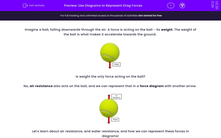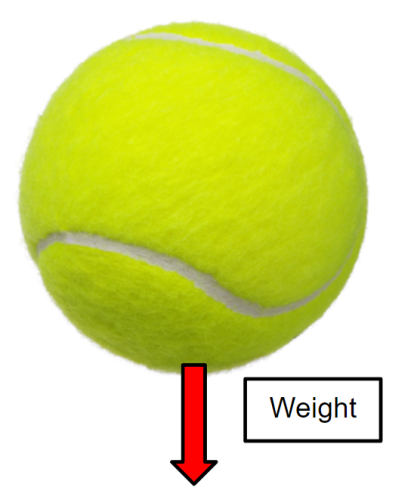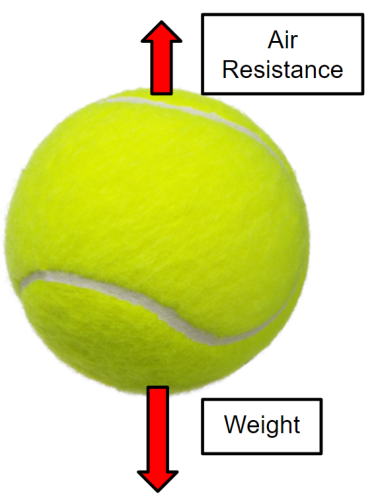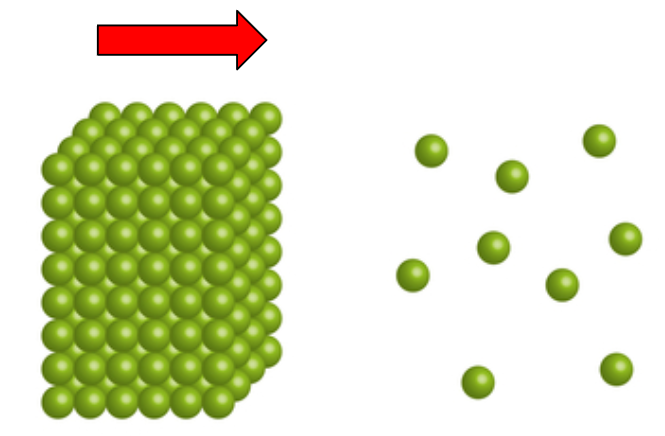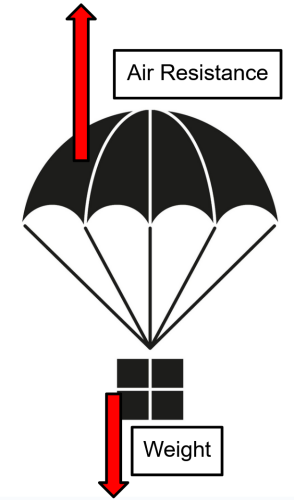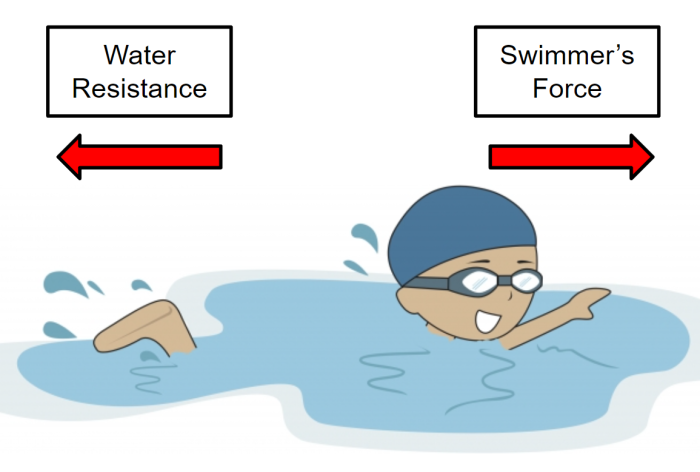Imagine a ball, falling downwards through the air. A force is acting on the ball - its weight. The weight of the ball is what makes it accelerate towards the ground.
Is weight the only force acting on the ball?
No, air resistance also acts on the ball, and we can represent that in a force diagram with another arrow.
Let's learn about air resistance, and water resistance, and how we can represent these forces in diagrams!
When objects move through gases or liquids, they have to 'push' the particles out of the way. This causes a resistance force, either air resistance or water resistance. In general, we sometimes call these forces drag.
Drag is a contact force, and it always acts in the opposite direction to the moving object. That's why, in our example of the tennis ball earlier, the air resistance acted upwards, as the ball was falling downwards.
In physics, we use force diagrams to represent the forces acting on objects. Force diagrams represent forces with arrows, and the arrows are labelled with either the name of the force or the size of the force in Newtons.
The direction of the arrow shows the direction of the force.
The length of the arrow shows the size of the force.
In this example, we can see two forces acting on the crate falling with a parachute. We can tell from the diagram that the weight is acting downwards, and the air resistance is acting upwards. We can also tell that the air resistance is a bigger force compared to the weight because the arrow is longer.
Here is another example. This diagram shows two of the forces on the swimmer - the forwards swimmer force and the backwards water resistance. This time, the water resistance is the same size as the forward force, so the forces are balanced.
For both air resistance and water resistance, we can make predictions about the motion of an object, depending on the relative sizes of the forces acting on them.
If the drag is less than the forward force, the object will accelerate forwards, increasing its speed.
If the drag is the same size as the forward force, the object will move forwards at a constant speed.
If the drag is greater than the forward force, the object will continue moving forwards but decelerate over time, getting slower.
Here is an example. A boat is travelling through the water and we represent two of the forces on the boat like this:
The forward force is greater than the backward water resistance. This means that the boat will accelerate forwards.
Now that we can apply our understanding of drag forces to force diagrams, let's try some practice questions.

